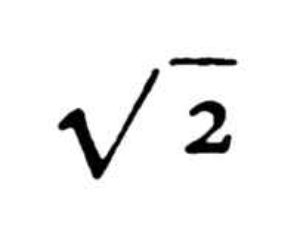The Sleepwalkers (14 page)
Authors: Arthur Koestler

____________________
* | Hence the |
It
did
not
last
long.
Within
a
few
centuries,
the
unitary
awareness
faded,
religious
and
rational
philosophizing
split
apart
–
were
partially
reunited,
then
divorced
again;
with
results
that
will
become
apparent
as
the
story
unfolds.
The
Pythagorean
synthesis
would
have
been
incomplete
had
it
not
also
included
precepts
for
a
way
of
life.
The
Brotherhood
was
a
religious
order,
but
at
the
same
time
an
academy
of
science,
and
a
power
in
Italian
politics.
The
ascetic
rules
of
life
seem
to
have
anticipated
the
Essenes',
which
in
turn
served
as
a
model
to
primitive
Christian
communities.
They
shared
all
property,
led
a
communal
existence,
and
gave
equal
status
to
women.
They
observed
rites
and
abstinences,
gave
much
time
to
contemplation
and
examinations
of
conscience.
According
to
the
degree
of
purification
which
a
Brother
achieved,
he
was
gradually
initiated
into
the
higher
mysteries
of
musical,
mathematical
and
astronomical
theoria
.
The
secrecy
surrounding
these
was
partly
due
to
the
tradition
of
the
older
mystery
cults,
whose
adepts
had
known
that
the
Bacchic,
and
even
the
Orphic,
ecstasies
would
cause
havoc
if
offered
to
all
and
sundry.
But
the
Pythagoreans
also
realized
that
similar
dangers
inhered
in
the
orgies
of
reasoning.
They
apparently
had
an
intuition
of
the
hybris
of
science,
and
recognized
it
as
a
potential
means
both
of
man's
liberation
and
destruction;
hence
their
insistence
that
only
those
purified
in
body
and
spirit
should
be
trusted
with
its
secrets.
In
a
word,
they
believed
that
scientists
ought
to
be
vegetarians,
as
Catholics
believe
that
priests
ought
to
live
in
celibacy.
It
may
be
thought
that
this
interpretation
of
the
Pythagorean
insistence
on
secretiveness
is
far-fetched,
or
that
it
implies
prophetic
foresight
on
their
part.
The
answer
to
this
is
that
Pythagoras
was,
by
personal
experience,
well
aware
of
the
immense
technological
potentialities
of
geometry.
I
have
mentioned
already
that
Polycrates,
and
the
islanders
he
ruled,
were
devoted
to
engineering.
Herodotus,
who
knew
the
island
well,
reports:
10
"I
have
written
thus
at
length
of
the
Samians,
because
they
are
the
makers
of
the
three
greatest
works
to
be
seen
in
any
Greek
land.
First
of
these
is
the
double-mouthed
tunnel
they
pierced
for
an
hundred
and
fifty
fathoms
through
the
base
of
a
high
hill
...
through
which
the
water,
coming
from
an
abundant
spring,
is
carried
by
its
pipes
to
the
city
of
Samos".
Herodotus
is
fond
of
telling
tall
stories,
and
his
report
was
not
taken
very
seriously,
until,
at
the
beginning
of
our
century,
the
tunnel
was
actually
found
and
excavated.
It
is
no
less
than
nine
hundred
yards
long,
complete
with
water-course
and
inspection-pathway,
and
its
shape
shows
that
it
was
begun
from
both
ends.
It
further
shows
that
the
two
digging
parties,
one
working
from
the
north,
the
other
from
the
south,
had
met
in
the
centre
only
a
couple
of
feet
apart.
Having
watched
this
fantastic
feat
being
performed
(by
Eupalinos,
who
also
built
the
second
marvel
mentioned
by
Herodotus,
a
huge
mole
to
protect
the
Samian
war-fleet),
even
a
lesser
genius
than
Pythagoras
might
have
realized
that
Science
may
become
a
hymn
to
the
creator
or
a
Pandora's
box,
and
that
it
should
be
trusted
only
to
saints.
It
is
said,
incidentally,
that
Pythagoras,
like
St.
Francis,
preached
to
animals,
which
would
seem
rather
odd
behaviour
in
a
modern
mathematician;
but
in
the
Pythagorean
view
nothing
could
be
more
natural.
5.
Tragedy
and
greatness
of
the
Pythagoreans
Towards
the
end
of
the
Master's
life,
or
shortly
after
his
death,
two
misfortunes
befell
the
Pythagoreans,
which
would
have
meant
the
end
of
any
sect
or
school
with
a
less
universal
outlook.
They
triumphantly
survived
both.
One
blow was the discovery of a type of numbers such as
